- Home
- Balogun Ojetade
Steamfunkateers Page 2
Steamfunkateers Read online
Page 2
If you roll no sixes, something goes wrong. You are now in the hands of the GM, and he decides what happens to you. Failure should always have consequences. In some cases, the rules outline what the failure means, but most times, the GM gets to decide.
At the end of the player’s turn, the player with the next highest Empathy skill takes their turn.
Each player’s turn results in a number of successes (rolling a six), and the player with the most sixes—or the player that beats the GM’s number of successes when trying to achieve some task or competing against or doing battle with an NPC—wins that round.
You can spend a point of Vigor to reroll all dice not showing sixes (see Vigor below).
Number of Dice in Pool
The number of dice rolled depends on the situation. With the GM’s approval, each player rolls a number of dice equal to the rank of his or her most relevant or most interesting skill for the situation. Players should size up the situation and determine which skill works best for their character, or perhaps which skill might make the scene most entertaining.
The base number of dice you receive is equal to your rank in the appropriate skill, but remember that how many dice you roll increases or decreases depending on your special abilities, your skill’s feats, the situation and other factors.
GM’s Roll
The GM typically rolls 6d—six dice. This roll may represent any challenge, contest, or conflict—from a rampaging, driverless stagecoach to a pack of thugs in a bar room brawl.
If the GM is playing several opponents that are fighting a team of PCs, he or she can add +1d for every NPC opponent that outnumbers the team of PCs, if the NPCs are as, or more, competent than the PCs. If the NPCs are a bunch of scrubs or very low-level minions, no dice should be added.
For relatively minor conflicts, the GM should consider whether it is worth a roll; it is sometimes better to simply resolve the conflict through colorful narration and move on.
Resuming a PCs Life
Once a conflict has been resolved, life goes on. Sometimes, however, conflict begets conflict. This happens most often in a fight as characters keep risking it all to be the last one standing. When the dice are rolled, everyone resolves their goals and any conditions suffered, the narrator describes the outcome, and the conflict is over. Should players or the GM wish to continue the conflict, they can fight on, rolling and scoring as above.
Narration
In each conflict, all players that succeed (i.e., roll at least one six), succeeds in his or her declared goal, and the GM describes just how his or her goal is fulfilled. If it is an opposed role—Player A vs. Player B—the one with the most successes wins. The “loser” of the conflict may or may not have succeeded in their goal. It is the GM’s choice to determine this.
The GM should take into account not only who “wins” and “loses” the conflict, but also how they won or lost. This should color their description.
Extraordinary rolls—like rolling Four Successes or more on the first roll—indicate dramatic and exceptional events, while winning a roll with just a single success or two indicates a relatively mundane or routine success for the character.
Losing a Challenge, Contest, or Conflict
Characters that lose, or fail at, actions suffer conditions. Conflicts are especially dangerous that way.
When a character loses a conflict, he suffers a condition equal in severity to the roll of a single die by the player that beat him, or the GM if the character was beaten by an NPC (see Conditions).
It’s important to remember that conditions inflicted may or may not be actual physical harm. It’s up to the describing character or GM to explain the injury.
Recovery
Characters recover from conditions at a rate dependent on whether the condition is fleeting, sticky, or lasting (see Conditions).
The GM may rule that conditions don’t heal normally if the characters have had little chance for rest and recovery.
Spending Vigor
In the course of the game, the GM may opt to give players a small number of points of Vigor to begin play. Players can use Vigor to various effects to improve their character’s abilities, assume narration of a conflict and improve their chances of getting a decent roll. Players may spend earned points of Vigor for the following:
Improve or earn additional Skill rank—Increasing a Skill rank costs a number of points of Vigor equal to the new Skill rank rating. Skill rank may be increased only one point at a time. Purchasing a new Skill rank costs two points of Vigor. Characters may have a maximum number of Skill rank equal to 6.
Assume Narration of a Conflict—by spending a point of Vigor, a player can assume the narration of one conflict, pre-empting narration by the GM as described in the rules above. Should another player or players attempt to spend Vigor to assume narration, the players may bid for narrative control of the scene. The player who spends the most points of Vigor narrates.
Assuming narrative control by spending Vigor also allows the player to reduce one step of any conditions his character suffered in the conflict, thus Severe would be reduced to Moderate, Moderate to Mild and Mild to no condition suffered at all.
Receive an Extra Die—Players can receive one extra die to roll by spending a point of Vigor. Players may gain only one extra die per roll.
Fold—The player may spend one point of Vigor to Fold, thereby removing his or her character from the risks and the rewards of a given action. Characters who fold receive no Vigor from the GM after a given conflict. If all player characters fold, then the conflict remains unresolved, and the GM—or even the players themselves—may re-introduce the issue at a later time.
Reroll— spend a point of Vigor to reroll all dice not showing sixes. You will usually only spend Vigor in this manner when your roll has failed, but you could spend a point of Vigor even if there were sixes in your initial roll, to get more sixes and unlock more bonus effects. You can only spend a point of Vigor once for each roll.
Every time a PC rerolls, the GM is awarded 1 point of Vigor. He can use accumulated Vigor in a number of ways. Here is just a small sample of the GM’s options:
Reroll: Just like when a PC rerolls, the GM can reroll a skill roll for an NPC. Costs 1 point of Vigor.
Take the Initiative: An NPC breaks the turn order and reacts before her slot in the turn. The GM chooses when. Costs 1 point of Vigor.
Lost Possession: A PC has dropped an important possession. The GM decides which. Costs 3 points of Vigor.
Reinforcements: The enemy receives unexpected backup. The GM decides the details. Costs 1-3 points of Vigor, depending on the reinforcements.
Innocent in Danger: An innocent bystander is suddenly caught in the line of fire and needs help. Will the PCs intervene? Costs 2 DP.
Hazard: Something dangerous in the environment around the PCs suddenly affects them. It could be collapsing beams or a landslide. Costs 1-3 points of Vigor, depending on the level of danger.
GMs must award points of Vigor in order for GMs to do the following:
Receive an Extra Die—The GM may award one point of Vigor to each player and receive one extra die to roll.
Fold—The GM may award one point of Vigor to each player present in a conflict to Fold. Just as when Players fold, the conflict ceases without resolution.
Obstacles
Descriptors are the primary source of penalties called Obstacles. An obstacle comes in 2 levels: Level-1 subtracts 1 die from a player’s pool of dice. Level-2 subtracts 2 dice from a player’s pool.
However, other factors may positively or negatively affect your pool:
Unfamiliarity: If a player character does not have an appropriate descriptor to apply and the action falls outside of the character’s Concept, a level-1 penalty should be applied.
Applicability: If two characters are opposed and one has a more appropriate and applicable concept or descriptor, for example Ayo Master versus Cunning in a game of ayo/mancala, a 1d (1 die) bonus might be awarded to the chara
cter with the more specific and applicable talent.
Conditions: These will regularly provide penalties.
Circumstance: Circumstantial modifiers overlap pretty freely with Conditions, but can be positive or negative. Common circumstantial modifiers are:
Superior or inferior tools
Being outnumbered or outnumbering the opposition
Holding a superior or inferior position (e.g. high ground, cover)
Environmental factors (e.g. darkness)
The Four Actions
When you make a skill check, you’re taking one of four actions: surmount, get the upper hand, attack, or defend.
When you make a skill check, you have to decide which of these you’re going to try. The skill descriptions tell you which actions are appropriate for that skill and under which circumstances. Usually, the action you need to take will be pretty obvious from the skill description, your intent, and the situation in play, but sometimes you might have to talk it over with the GM to find out which is the most appropriate.
Once again, the four actions are: Surmount, Get the Upper Hand, Attack, and Defend.
Surmount
Use the surmount action to achieve assorted goals appropriate to your skill.
Every skill has a certain niche of miscellaneous endeavors that fall under its purview, certain situations where it’s an ideal choice. A character with Burglary tries to jimmy a window, a character with Empathy tries to calm the crowd, and a character with Tinkering tries to fix the broken axle on his wagon after a desperate chase.
When your character’s in one of these situations and there’s something between her and her goals, you use the surmount action to deal with it. Look at Surmount as the “catch-all” action for every skill—if it doesn’t fall into any other category, it’s probably a surmount action.
The opposition you have to beat might be active or passive, depending on the situation.
Get the Upper Hand
Use the get the upper hand action to make a situation descriptor that gives you a benefit, or to claim a benefit from any descriptor you have access to.
The get the upper hand action covers a broad range of endeavors, unified around the theme of using your skills to take advantage (hence the name) of the environment or situation you’re in.
Sometimes, that means you’re doing something to actively change your circumstances (like throwing sand in an opponent’s eyes or setting something on fire), but it could also mean that you’re discovering new information that helps you (like learning the weakness of a monster through research), or taking advantage of something you’ve previously observed (like your opponent’s predisposition to a bad temper).
When you roll to get the upper hand, you must specify whether you’re creating a new situation descriptor or taking advantage of a descriptor that’s already in place. If the former, are you attaching that situation descriptor to a character or to the environment?
Opposition might be active or passive, depending on the circumstances. If your target is another character, their roll always counts as a defend action.
If you’re using get the upper hand to make a new descriptor or on an existing one:
When you fail (or lose the round) you don’t create the descriptor.
When you succeed (or win the round) you create a situation descriptor with a free invocation.
Attack
Use the attack action to harm someone in a conflict or take them out of a scene.
The attack action is the most straightforward of the four actions—when you want to hurt someone in a conflict, it’s an attack. An attack isn’t always physical in nature; some skills allow you to hurt someone mentally as well.
Most of the time, your target will actively oppose your attack. Passive opposition on an attack means you’ve caught your target unaware or other-wise unable to make a full effort to resist you, or the NPC isn’t important enough to bother with dice.
In addition, passive or not, the opposition always counts as a defend action so you can look at attack and defend as being naturally intertwined.
When you fail at an attack, you don’t cause any harm to your target. It also means that your target succeeded on the defend action, which could get you saddled with other effects.
When you succeed at an attack, you inflict a condition on your target equal in severity to the roll of a die that you make (see Conditions).
Defend
Use the defend action to avoid an attack or prevent someone from getting the upper hand against you.
Whenever someone attacks you in a conflict or tries to get the upper hand on you, you always get a chance to defend. As with attacks, this isn’t always about avoiding physical sources of danger—some of the skills allow you to defend against attempts to harm your mind or damage your resolve.
Because you roll your dice to defend as a reaction, your opposition is almost always active. If you’re performing a defend action against passive opposition, it’s because the environment is hostile to you somehow (like a blazing fire, or a booby trap), or the attacking NPC isn’t important enough for the GM to bother with dice.
When you fail at a defense, you suffer the consequences of whatever you were trying to prevent. You might take a condition or have an advantage created on you.
When you succeed at a defense, you successfully avoid the attack or the attempt to gain an advantage on you.
Remember, you can succeed by rolling a single 6—you beat the challenge, but just barely. If you roll multiple 6s, you beat the challenge and receive some unexpected, positive side effect—wounding an enemy, helping a friend, or finding a new way ahead, for example.
Breaking Down The Action
Most of the time, a single round played should be enough to decide how a particular situation in play resolves. You’re not obligated to describe actions in a particular timeframe or level of detail when you use a skill. Therefore, you could use a single Athletics check to find out whether you can safely navigate a rock face that will take days to climb, or use that same single skill check to find out whether you can safely avoid a swiftly falling tree that’s about to crush you.
Sometimes, however, you’ll be in a situation where you’re doing something really dramatic and interesting, like pivotal actions in a movie or a book. When that happens, it’s a good idea to zoom in on the action and deal with it using multiple skill checks, because the wide range of die results will make things really dynamic and surprising. Most fight scenes fall into this category, but you can zoom in on anything that you consider sufficiently important—steam car chases, court trials, high-stakes spades games, and so on.
We have three ways for you to break down the action in Steamfunkateers:
Challenges, when one or more characters try to achieve something dynamic or complicated.
To set up a challenge, simply identify the individual tasks or goals that make up the situation, and treat each one as a separate surmount check. Sometimes, only a certain sequence for the checks will make sense to you; that’s okay too. Depending on the situation, one character may be required to make several checks, or multiple characters may be able to participate.
Contests, when two or more characters are competing for a goal.
A contest proceeds in a series of exchanges. In an exchange, every participant gets to make one skill check to determine how well they do in that leg of the contest. This is basically a surmount action.
A competing player compares his or her score to everyone else’s.
If you got the most successes (the most 6s rolled), you win the exchange.
Winning the exchange means you score a victory (which you can just represent with a tally mark or check mark on scratch paper) and describe how you take the lead. The first participant to achieve THREE victories wins the contest.
Conflicts, when two or more characters are trying to directly harm each other.
Conflicts are either physical or mental in nature, based on the kind of harm you’re at ris
k of suffering. In physical conflicts, you suffer bruises, scrapes, cuts, and other injuries. In mental conflicts, you suffer loss of confidence and self-esteem, loss of composure, and other psychological trauma.
Setting up a conflict is a little more involved than setting up contests or challenges. Here are the steps:
Set the scene, describing the environment the conflict takes place in, creating situation descriptors and zones, and establishing who is participating and what side they’re on.
Determine the turn order.
Start the first exchange:
On your turn, take an action and then resolve it.
On other people’s turns, defend or respond to their actions as necessary.
At the end of everyone’s turn, start again with a new exchange.
Turn Order
Your turn order in a conflict is based on your skills. In a physical conflict, compare your Spot skill to the other participants. In a mental conflict, compare your Empathy skill. Whoever has the highest gets to go first, and then everyone else in descending order.
If there’s a tie, compare a secondary or tertiary skill. For physical conflicts, that’s Athletics, then Physique. For mental conflicts, Rapport, then Will. If there is still a tie, each player and NPC involved in the tie rolls a single die. Highest number wins.
The Exchange
Exchanges in a conflict are a little more complicated than in contests. In an exchange, every character gets a turn to take an action. GMs, you get to go once for every NPC you control in the conflict.
Most of the time, you’re going to be attacking another character or getting the upper hand on your turn, because that’s the point of a conflict—defeat your opponent, or set things up to make it easier to defeat your opponent.
However, if you have a secondary objective in the conflict scene, you might need to perform a surmount action instead. You’ll encounter this most often if you want to move between zones but there’s a situation descriptor in place making that problematic.

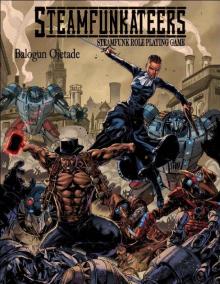 Steamfunkateers
Steamfunkateers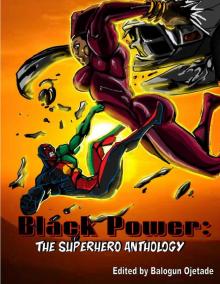 Black Power- The Superhero Anthology
Black Power- The Superhero Anthology Gunsmoke Blues
Gunsmoke Blues The Haunting of the House of Crum
The Haunting of the House of Crum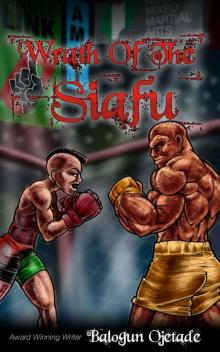 Wrath of the Siafu- A SIngle Link
Wrath of the Siafu- A SIngle Link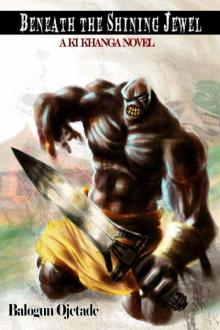 Beneath the Shining Jewel
Beneath the Shining Jewel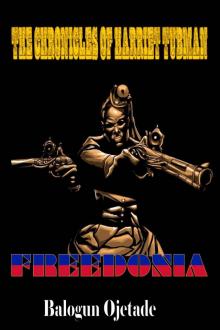 The Chronicles of Harriet Tubman- Freedonia
The Chronicles of Harriet Tubman- Freedonia A Haunting in the SWATS (The Savannah Swan Files Book 1)
A Haunting in the SWATS (The Savannah Swan Files Book 1)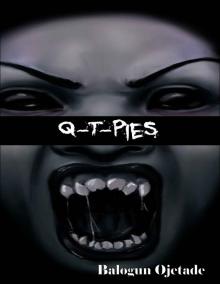 Q-T-Pies (The Savannah Swan Files Book 0)
Q-T-Pies (The Savannah Swan Files Book 0)